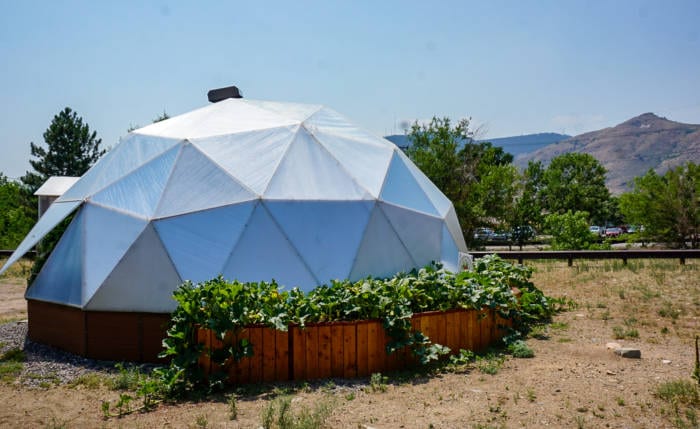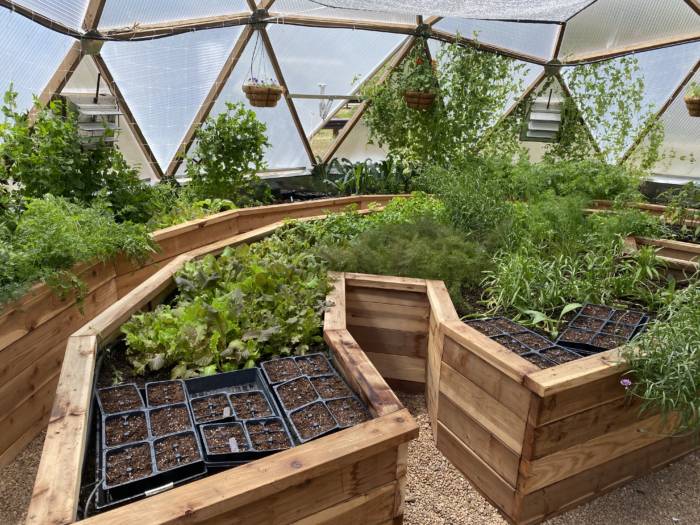
Designing and Constructing Raised Garden Beds in a Growing Dome Greenhouse
For those of you who may be considering building a Growing Dome greenhouse kit from Growing Spaces, we have a wide selection of pictures of different raised garden bed designs from Growing Dome Owners. Raised garden beds are not included or built as part of the standard Growing Dome kit and installation, but our partner Backyard Boxes, now sells interior raised bed kits for self-installation! Check out our store to learn more about ordering a raised bed kit.
In the Growing Dome, there is usually an outer raised bed, a circular pathway, and then an inner raised bed. You can add keyholes for easy access. The outer raised garden beds generally match the height of the two-foot foundation wall, and the inner beds can depend on the personal preference of the owner.
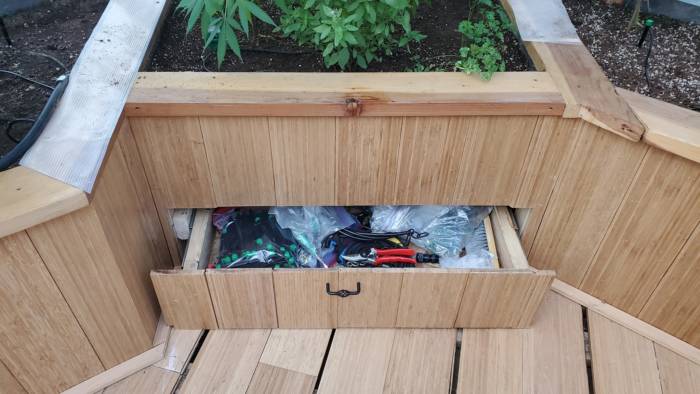
Some owners build their raised vegetable beds higher to avoid bending over, design tiered beds to allow for different root structures or add a storage drawer under their shallower raised beds for their gardening tools. If you have beds built in front of the water tank, it is important not to have the bed higher than 1’ so it does not cut down on the solar heat exchange of the tank. But the raised bed design is entirely up to the owner of the Growing Dome!
Raised Garden Bed Designs and Cut Lists

Growing Dome Owners can call us to obtain plans and cut lists for common internal raised garden bed designs. The cut list would include the length, miter, and quantity of each piece as well as a list of other construction materials required. A miter saw is helpful to cut the angles, but it can also be done with a hand saw that has an adjustable blade.
For Growing Domes that we deliver or install, we may also be able to provide pre-cut lumber and raised bed kits. This will make it easier for you to build the raised beds, or contact us to see if raised bed installation is available in your area. Be sure to check out the following video tour of the Growing Domes we have on-site in Pagosa Springs, Colorado for additional raised bed design ideas. Our Growing Dome Advisers are always happy to discuss exterior raised planting beds and other customization options for your Growing Dome.
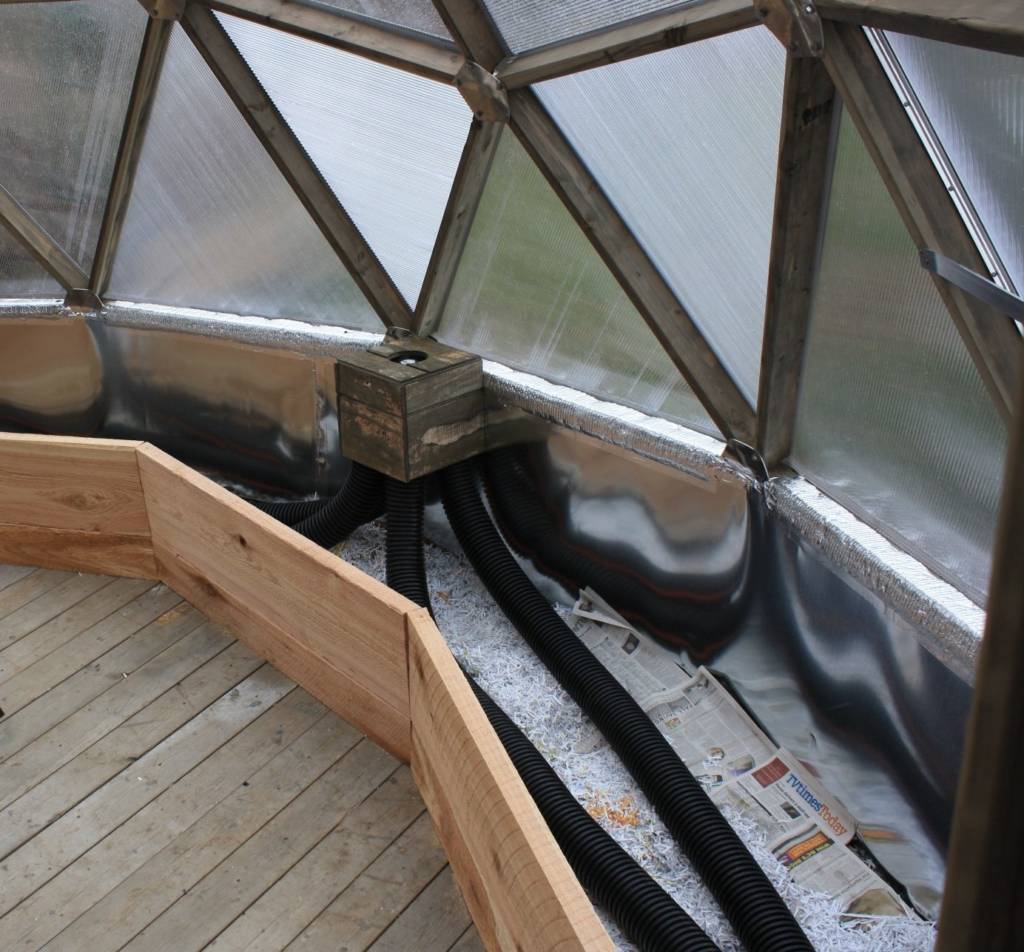
Undersoil Ventilation System
An important consideration is that the Undersoil Ventilation System is installed inside the planting beds around the interior perimeter of the foundation wall. Make sure to lay this out as you build your beds, as you may need to cut holes in the lumber for the corrugated pipe. These will help control the temperature of your outer raised beds, and protect your plants from frost through the winter.
Raised Garden Bed Materials

Rot-resistant lumber like redwood and cedar are great options for building raised garden beds. When using non-moisture-resistant lumber or pressure-treated lumber, it is a good choice to line your beds with galvanized sheet metal or aluminum. The outer bed wall should already be lined with the metal flashing in your Growing Dome Greenhouse kit.
In addition to lumber, we have found our owners use recycled plastic, plywood, recycled pallets, sheet metal, adobe stucco, rocks and concrete, cinder blocks, aluminum siding, brick, railroad ties, and many other materials and methods for their bed projects. Keep in mind that pave stone can trap heat and make your dome hotter in the summer, but it looks gorgeous!
Wall Lining
The wall lining inside the Growing Dome is a flashing grade (32 Gauge) galvanized steel. Generally, galvanized steel takes a very long time to rust.
However, due to the presence of oxygen, moisture, and dissolved salts that are present in the soil, when the wall lining is buried the zinc coating that protects the steel from oxidation eventually begins to wear away and the steel will begin to corrode. The rate at which the steel corrodes depends on the soil’s chemical composition and moisture levels, as well as the pH of the water.
We have had many customers report that the metal wall lining has lasted the life of their dome. Other customers have asked us what they can do to be more proactive in extending the life of the dome, so here are a few suggestions along with the pros and cons for each that may be useful. Not all of these have been tested by Growing Spaces and none of these are guaranteed to prevent the corrosion of the wall lining.
- Black Poly Sheeting: Thin, lightweight, and affordable, this material will protect the wall lining, but will also eventually degrade. It is also prone to tearing. It is readily available and easy to install.
- Tyvek® is a trademarked name for material made from high-density spun-bound polyethylene fibers. It is 100% synthetic, lightweight, durable, and breathable, yet resistant to water, abrasion, bacterial penetration, and aging. It is safe for food contact materials and is readily available in 2’ widths and long rolls. Found for around $1/foot it is an economical choice, but not the lowest cost choice. The downside to Tyvek is that it is breathable. This could potentially cause sweating between the wall lining and the Tyvek. “Sweating” still may be more desirable than contact with the minerals in the soil and should add life to the wall lining regardless.
- EPDM is an extremely durable synthetic rubber. It is also very flexible so it will be easy to install. It has UV protection and will not degrade in the presence of soil or water. However, there may still be sweating between the EPDM and the wall lining, which could still cause corrosion. While not extremely expensive, sourcing EPDM in 2’ widths can be challenging.
- With varying roll widths and thicknesses available, an HDPE liner is easy to use as well as to source. The material is puncture resistant, UV stabilized, and provides an approximate 100-year lifespan when buried underground. There is the potential for sweating between the material and the wall. HDPE is somewhat more expensive than EPDM.
- Cement board siding, a type of fiber cement siding more commonly known as “hardie board”, offers a durable solution to protecting the wall lining. Hardie board could also be used instead of metal because of the structural nature of the product. The downside is that each individual section would need to be cut to fit the wall section, and the material is heavy and can be difficult to work with. One would also want to take care to seal the seams and edges after installation. The interior face of the hardie panel can cause deterioration when exposed to soil, but the exterior face would hold up, especially when painted. People may have concerns about this material being in contact with their garden soil.
- Used for many years in pond applications, Liquid Rubber is a water-based, elastomeric coating that can be applied directly to the metal. Once applied, it cures to form a seamless, flexible, and highly durable membrane that is resistant to weathering, UV radiation, and chemicals. It is easy to install and non-toxic but is the most expensive option listed. The upside is that there is no air pocket between the metal and the liquid rubber, so sweating or rusting should not be an issue.
Raised Garden Bed Designs Estimated Costs
Of course, the costs for your raised bed materials will largely depend on what materials you choose. For planning and budgeting purposes, here are some rough estimates.
| 15′ | 18′ | 22′ | 26′ | 33′ | 42′ | |
| Raised Bed Estimates | $440 | $550 | $880 | $1,100 | $1,650 | $2,750 |
| Soil Quantity Estimates (cubic yards) | 6 | 9 | 16 | 22 | 30 | 45 |
Pathways and Door
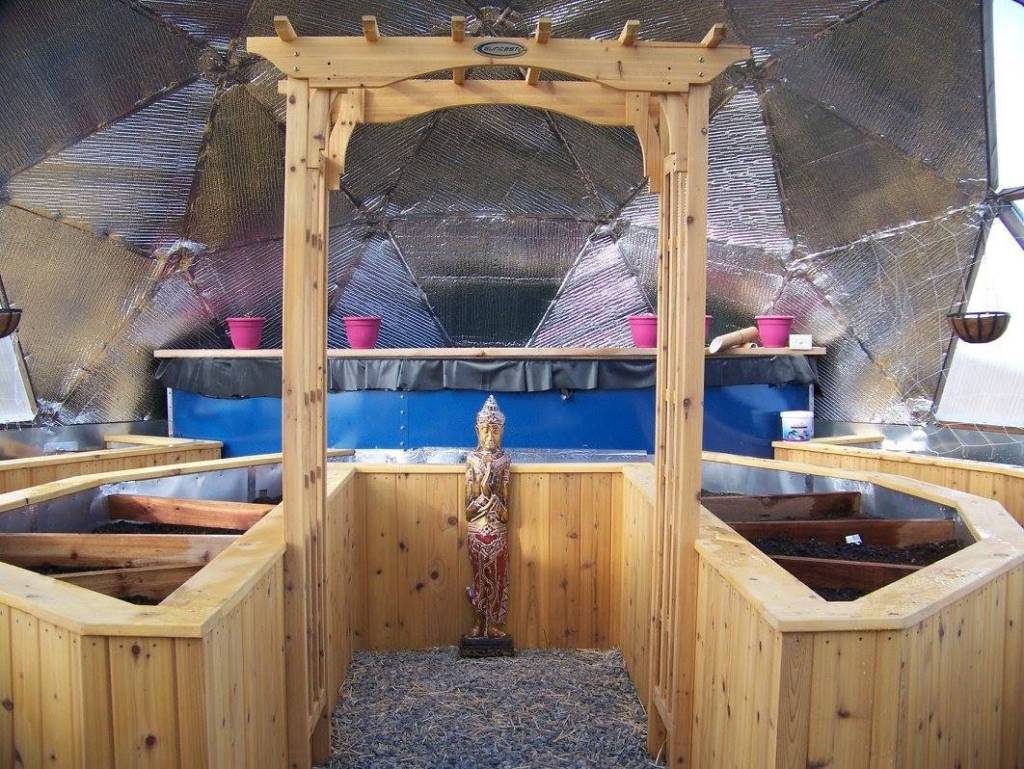
The pathways can be comprised of anything from pea gravel, redwood, cedar, Trex, or flagstone, to brick pavers. We recommend not to use mulch or bark chips, as it is a nice home for pests. When designing your raised beds and paths, keep in mind that too much pathway area can create a lot of heat buildup in the summer months, especially if you use brick pavers, flagstone, gravel, or any other high-density materials. However, in the winter months, high-density materials are very effective as thermal mass. If you want to use high-density building materials for your raised beds and/or pathways, plants can provide the necessary shade in the summer months to keep the mass cool. Hanging the shade cloth that comes with the Growing Dome may also aid in keeping your paths cool.
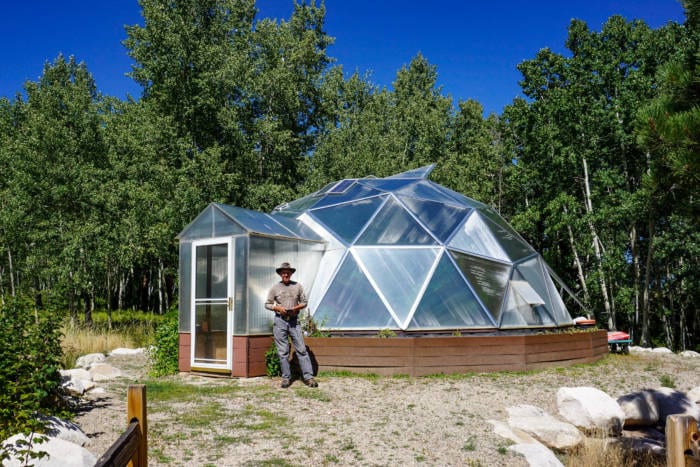
Some people incorporate a screen door as well as the standard Growing Dome door. Screen doors can be sourced from a local window and door company. A screen door provides extra cooling in the summer months while keeping unwanted guests or pests from getting inside the greenhouse.
Space to Relax
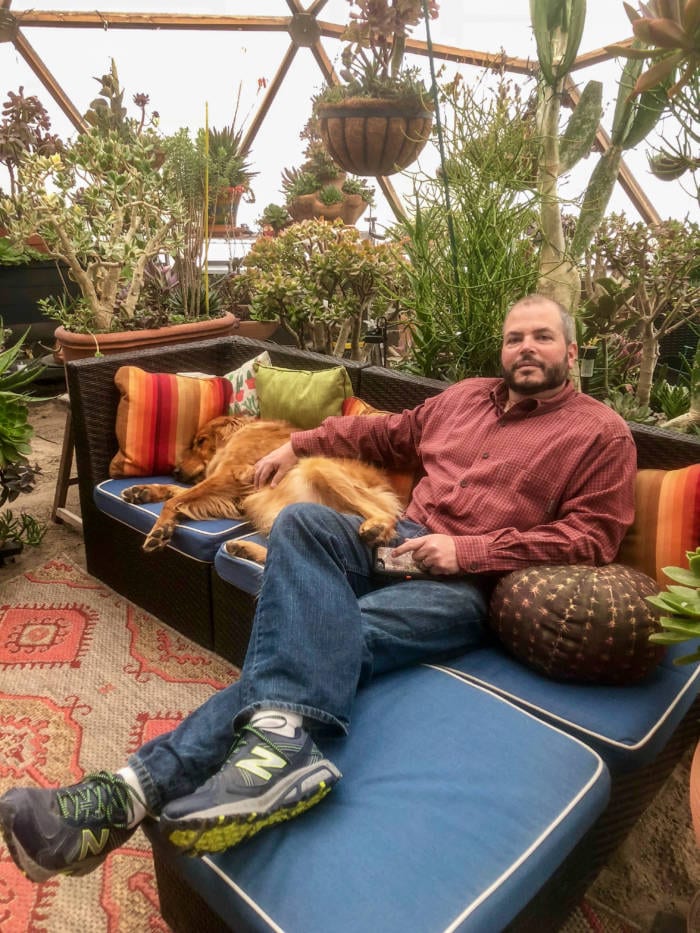
In our larger domes, many people like to have a seating area with a table and a shade umbrella. This does a great job of keeping the area cool during the hot summer months. And there is nothing like having a warm and cozy space to relax in the long winter months.
If you are debating on having extra garden bed space versus space to relax, maybe try and employ some square foot gardening practices to optimize your available garden space. The reality is many of our customers wish they went one size bigger when planning their Growing Dome greenhouse.

The Water Tank
The perfect spot for your herb garden, starts, flowers, or plants that take up small spaces is on the cross-beam on the top of the water tank on 15′ through 26′ Growing Domes. This provides a warm, moist spot for your herbs and flowers. Floating Islands and aquatic plants offer additional decoration in your Growing Dome and also create a great ecosystem for your fish.
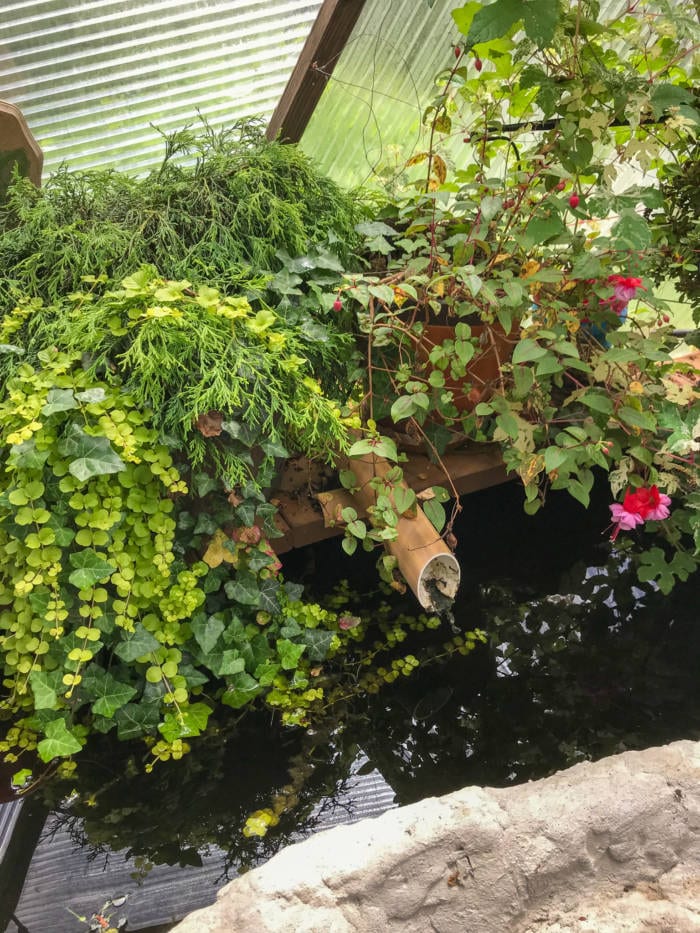

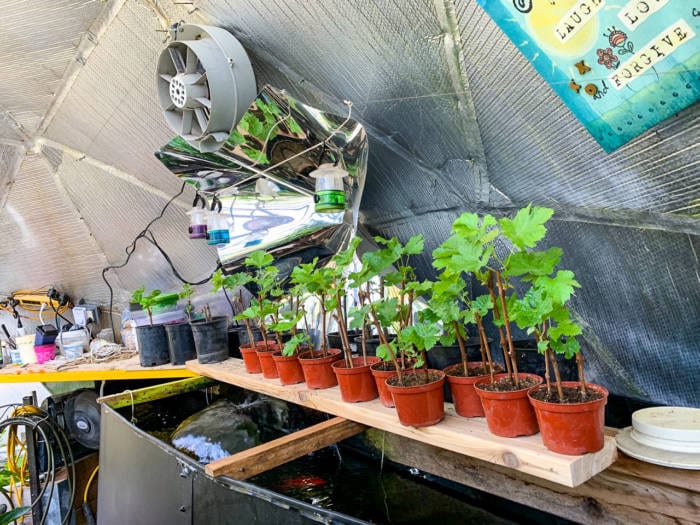

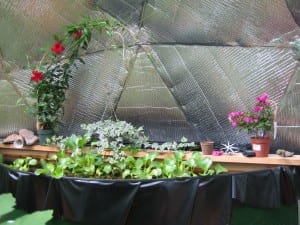
Some customers have actually built raised decks over their pond to create a nice relaxing space!
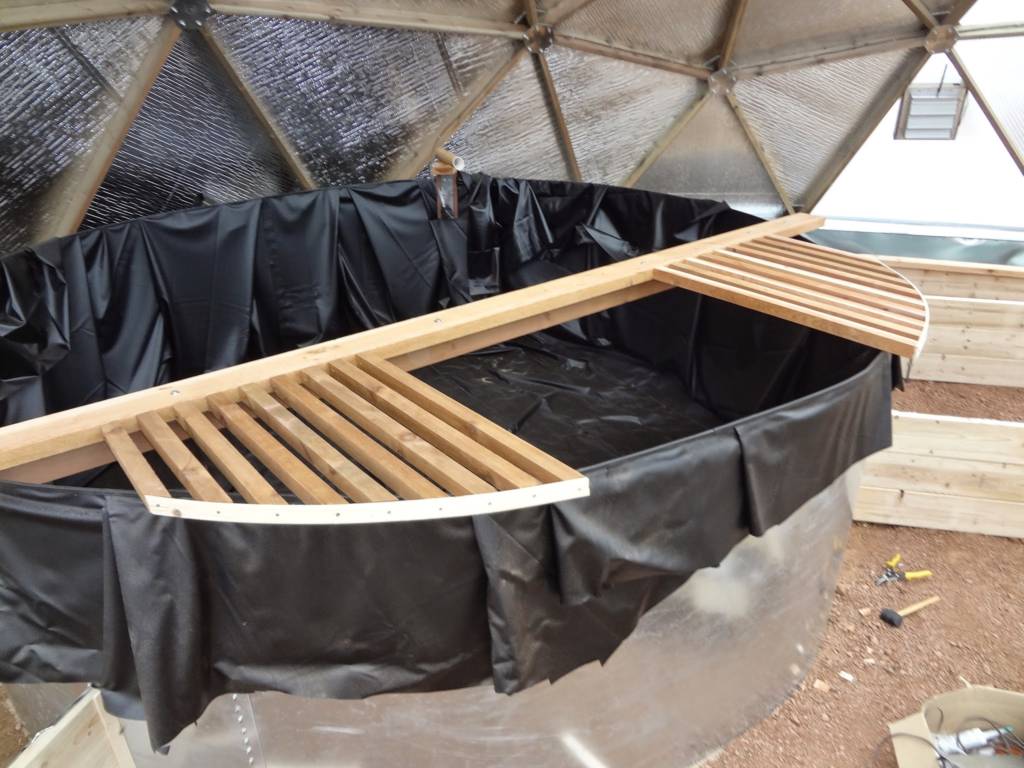
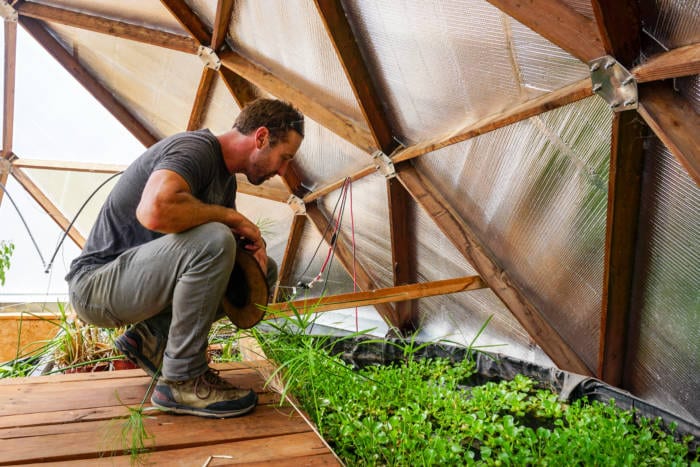
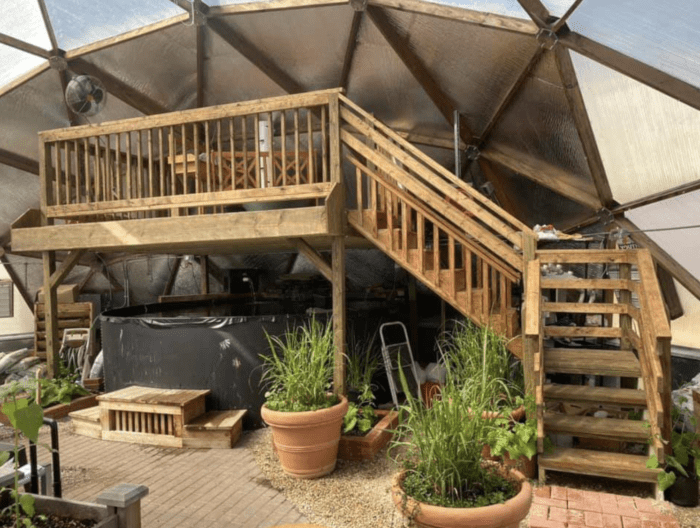
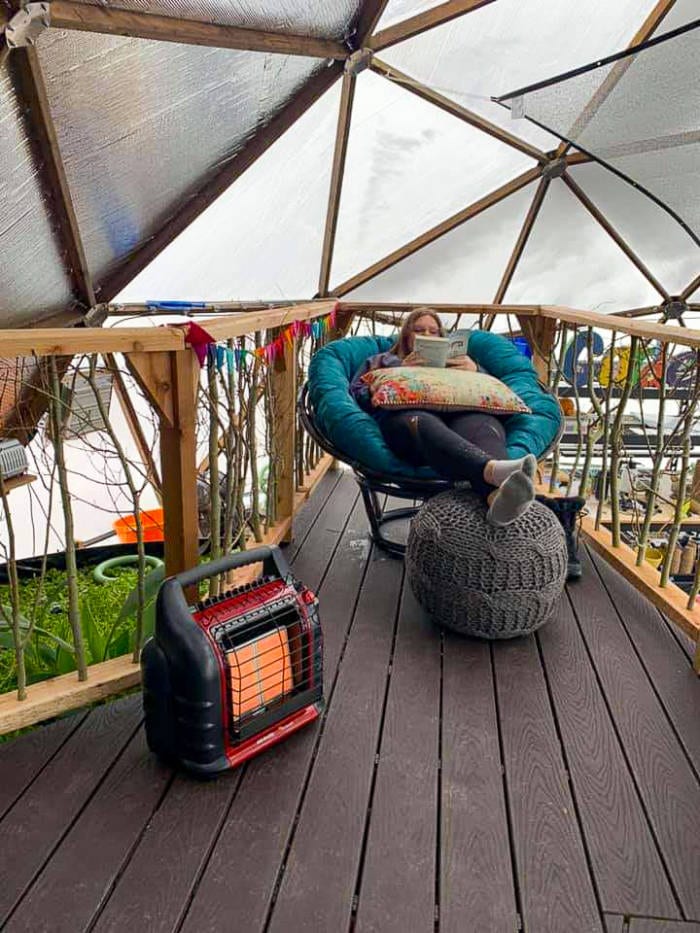
Outdoor Beds
Adding planter boxes to the outside of your Growing Dome can not only add beauty and another small garden to your landscape, but it also adds additional insulation to your foundation wall. Make sure to line the beds so the siding does not rot.


